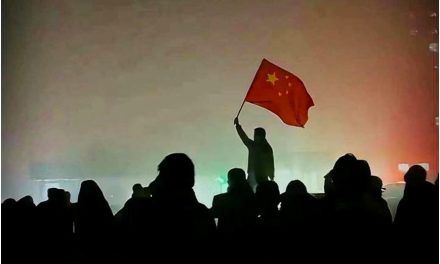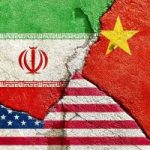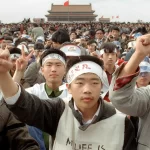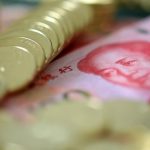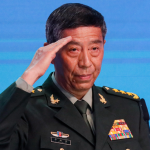BY LIANCHAO HAN AND BRADLEY THAYER
The Chinese Communist Party (CCP) recently passed its third resolution on history, boasting of its 100 years of achievement. But the document focuses mainly on the so-called historic breakthroughs and landmark achievements done by China’s current leader, Xi Jinping, giving him the title of “Great Helmsman” — a term previously reserved for the god-like dictator Mao Zedong. It’s another indication of Xi’s intent to rule for life.
This resolution firmly establishes Xi as the core leader and “Xi Jinping Thought” as the guiding ideology for China. A consequence of this is that, as the great-power competition intensifies between the United States and China, we have no choice but to understand Xi and his ideology. The ideology compels the CCP to achieve its second centenary goal, which is to displace the U.S. as the dominant global power and create a China-centered new world order of socialism with Chinese characteristics.
In sum, there is an ideological war between the liberal world order and China’s new order, and this compels a response from the U.S.
In our view, the internet is the most critical vulnerability of the CCP that may ensure America’s victory in the present struggle. The CCP’s recognition of its weakness can be shown by the emphasis made in the third resolution, in which the party states that “the Central Committee has made it clear that failure in the cyberspace domain will spell disaster for the Party’s long-term governance. The Party therefore attaches great importance to the internet as the main arena, battleground, and front line of the ideological struggle.”
Like all tyrannical regimes, China relies on deception, lies and misinformation to control the free flow of information. This permits the CCP to conceal and obfuscate their human rights atrocities and maintain their grip on power. For years, the internet made it more difficult for the regime to hide the truth. But when Xi came to power, he identified the internet as the most critical vulnerability that could lead to the CCP’s loss of control. So, at the outset of his rule, Xi cracked down on internet usage, launching aggressive campaigns seeking to suppress any ideas that deviate from the CCP’s ideology. Online opinion leaders, bloggers, public intellectuals, human rights lawyers and other civil society organizations fell victim to these campaigns and Xi effectively silenced dissenting voices in today’s China. He then pivoted to weaponize the internet, allowing the regime to surveil, detect and remove security risks and control information to facilitate indoctrination of the people.
As China’s strength increases, Xi’s digital dictatorial ambition is expanding. He has intensified China’s global public-opinion and psychological warfare campaigns against the democracies. The CCP is concentrating its forces on these forms of warfare — what the party terms “Gong Xin,” meaning literally “to storm the hearts.” The CCP believes whoever rules information, rules people’s minds and hearts. Whoever rules people’s minds and hearts, dominates global opinion and narratives. In such a war, psychological supremacy is key.
Therefore, to gain dominance, the CCP deploys a large internet army to patrol and propagandize in cyberspace. It also employs the ever-increasing heights of the Great Firewall to protect the regime and advanced artificial intelligence to facilitate its defenses, as well as to make its offensive campaigns more effective. The current cognitive war against Taiwan is a good example, and the world should not underestimate these weapons.
However, the inherent contradictions of Xi’s ideology and the regime’s rule by terror and deception ensure that China’s political system is vulnerable and unsustainable. To defeat the new world order of socialism with Chinese characteristics, we must strengthen our liberal world order globally. The free flow of information, the key advantage of the liberal order, is both a sword and shield for the West and must be employed to defend the free world and defeat the CCP.
We believe the best approach to strengthen the liberal world order, and to counter totalitarianism and digital dictatorship, is to close the global digital divide. This should be accomplished by providing a free and open internet for the world, through satellite-based direct, free internet access. In doing so, we can change our reactive and defensive response to China’s ideological aggression into a proactive and offensive one. Such an open internet architecture would bring the fight into our strategic rival’s territory and allow the Chinese people to fight their own fight and hold the CCP accountable.
More importantly, this approach would level the playing field for disadvantaged peoples in the Indo-Pacific and other regions by empowering them through democratization of education, knowledge, information, health care and commerce. The liberal world order’s great advantage over China’s repressive system lies in the free flow of information — free speech, free press and free-market ideas. A free and open internet can augment these advantages, which, in turn, will strengthen the liberal world order and undermine the CCP. New-generation technology such as satellite direct internet access is commercially available and surely can be financed to make it free for all.
Democracies must take concerted actions to address the CCP’s ideological threat and the illegitimacy of China’s regime. The West has passed the point of managing China’s imperial rise. Regime change would remove the threat — and should be the way to move forward — but it risks conflict escalation or requires other drastic measures, such as deep decoupling, which the West is not ready to do. The best strategic option at this moment lies in asymmetrically strengthening the existing liberal world order to counter China’s new order and undermine the regime.
Were the West to create the positive externality of a free, global internet, the world would benefit — not only from the elimination of the CCP threat, but also through the improvement of the education and health of the world’s population.
This article first appeared in The Hill on 12/02/21 1:00 PM ET


